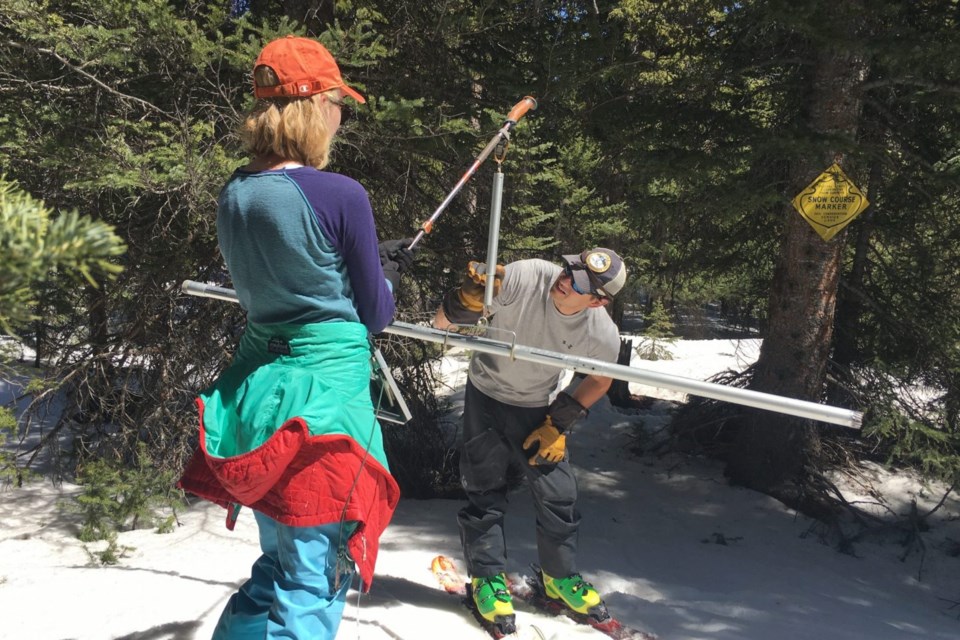Editor’s note: This story was originally published by CPR News and was shared via AP StoryShare.
Brian Domonkos straps on a pair of cross-country skis and glides through the trees along Mosquito Creek west of Fairplay.
It’s May, but there’s still snow in Colorado’s mountains near the headwaters of the South Platte River.
Domonkos, the Colorado Snow Survey supervisor, gets to work measuring how much snowpack is left from the winter to runoff into streams, rivers and reservoirs this summer. These mountains trap snow in a natural reservoir. As it melts, it becomes the primary source of water for Colorado and much of the West.
Climate change is disrupting this delicate system in multiple ways. The overall trend shows less snowpack accumulation due to warmer temperatures. What does collect melts sooner and faster, which means less snow on the ground and a greater chance for wildfires.
To measure the snowpack, the total seasonal accumulation of snow on the ground, Domonkos skis to specific points on what’s called a snow course. He then jabs a tall metal pipe into the snow to collect a core sample.
“We're actually gonna weigh the snow tube set and the amount of snow that we captured in that sample, we'll then know how much water is in the snowpack at that exact point,” Domonkos said.
The snowpack at the South Platte’s headwaters is over 110 percent of normal levels for this time of year, but that’s not the case for the rest of the state. In southwest Colorado, it’s less than 40 percent in areas that are already experiencing a historic drought.
The trend is concerning, Domonkos said.
“That might be the real wow factor for me, where these soil moisture deficits and low stream flows that we're seeing in the fall prior are having such a massive impact on the current year streams,” he said.
Year after year, unusually dry soils from warmer than normal temperatures and a lack of moisture are absorbing a lot of the water that melts from the snowpack. This means a lot of water isn’t making it into rivers and streams, essentially limiting the efficiency of the melting snow.
Even a year with an above-normal snowpack might not push Colorado out of a shorter-term drought, Domonkos said.
“That's where I think some of our concerns for us as professionals that do this, the deeper we get we wonder if we're able to get out of it,” he said.
Dry soils are taking water
Colorado has also been missing out on its late summer monsoon rains the last few years. Assistant state climatologist Becky Bolinger said that means the soils don’t have a chance to catch up on moisture until the snow melts.
“Your soils are dry, which gets into this unfortunate feedback loop of hot soils, evaporating dry and hot air,” she said.
Bolinger said those dry soils from the fall soak up the snowmelt that should flow into streams in the spring. Last year was a good example — no big monsoon showed up in 2020, and “incredibly hot temperatures” dried out the soil.


.jpg;w=120;h=80;mode=crop)
